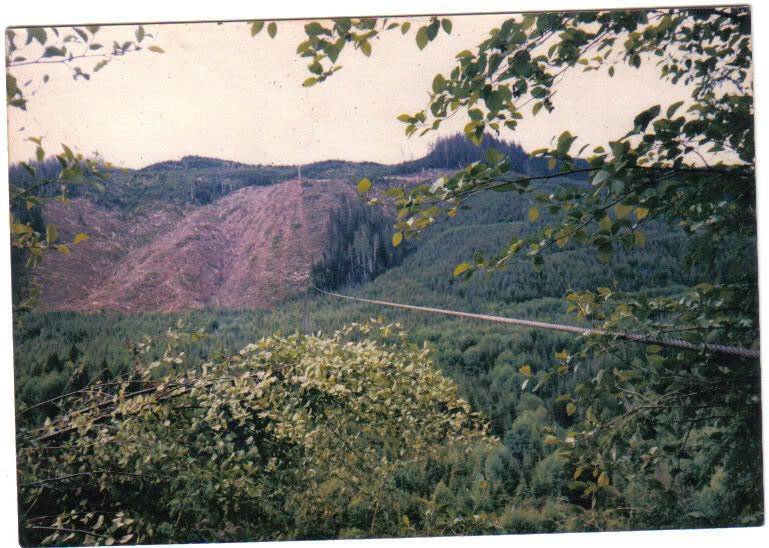I am recuperating from getting soaked, even boots were squishy, after spending several hours hunting for helicopter units and then looking at stuff.
The units have thick huckleberry brush in and around them which is always pleasant to walk through on a wet, drizzly day--too warm for rain gear too.
Yup, after hitting 104 on Saturday, we have gone back to rain.
Anyway, last week, on a hot morning, after pucker sidling along a rock/vertical slope, I found a nice trail up to the road. It was an old fireline around an old unit. Up near the road were the old guyline stumps, and boy, did they ever spike the lines around it. The spikes are still in the stumps and here's a couple of pictures. It was early morning and darkish so the flash kind of washed out the pictures...my apologies.


I imagine there is a way to put circles and arrows on these images but I don't know how. So I will try to ask some questions, tell me if they make sense. On the stumps there appears to be 2 lines of spikes, maybe more. Was a length of wire rope wrapped around more than one complete wrap ( a round turn)? What size rope was used back in the hayday of logging for the sky line and how long were the runs? How big was the typical tailhold stump?
I ran across an old wheeled arch the other day, I'll try to get a pic up tomorrow. On one of the ranches we chase cows on there is an old tracked arch. If I dn't have a pic I will get one in the next week or so. In fact I may have a pic somewhere.






 Also, he hits right on with what the computer spits out. I'll run a profile and let the program figure out how high to hang in the tail tree, he'll park his shovel up on the landing with the boom up and will walk down, and figure out how high. He hits right on with what I get from the computer.
Also, he hits right on with what the computer spits out. I'll run a profile and let the program figure out how high to hang in the tail tree, he'll park his shovel up on the landing with the boom up and will walk down, and figure out how high. He hits right on with what I get from the computer.